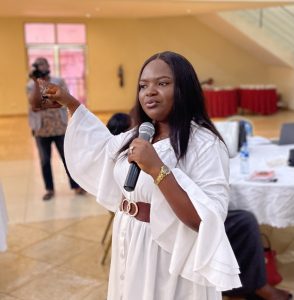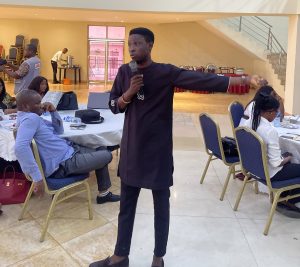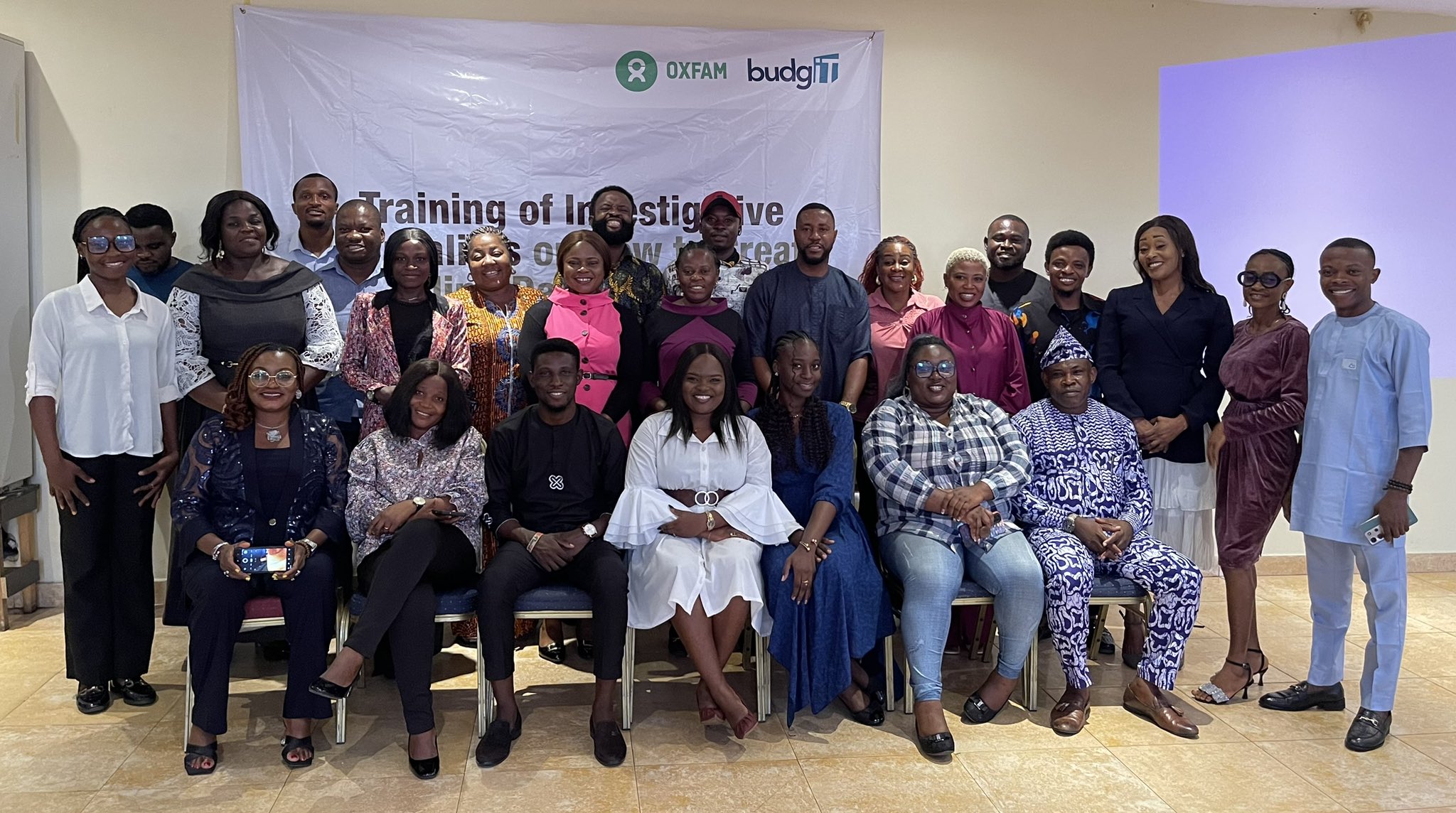In line with its shared commitment to promoting informed journalism to drive social change, BudgIT’s Natural Resource and Climate Governance Team, in collaboration with Oxfam, organised a training for Investigative Journalists on creating compelling data-driven stories. The training was held on Thursday, November 14, 2024, at the Monty Suites in Calabar, Cross River, with 26 journalists committed to enhancing their investigative skills in attendance. By focusing on the importance of data analytics in journalism, the training aimed to empower these journalists to produce compelling narratives that would influence policy reform. Participants were equipped with the tools and knowledge needed to elevate their investigative reporting, ultimately fostering greater accountability and transparency in governance related to natural resources and climate issues.

The training began with a warm welcome from Kofoworola Awotoye from Natural Resources and Climate Governance, who spoke about the main aim of the training. She then led an introductory session where the journalists introduced themselves and their organisations. She then called alums of past training to share their success stories, telling how the training enhanced their storytelling skills and influenced policy discussions and reforms. These stories motivated the participants who were joining the training for the first time.
Foundational Communication Strategies and Skills for Journalists by Nancy Odimegwu, BudgIT’s Communications Associate.
BudgIT’s Communications Associate, Nancy Odimegwu, led the first session on Foundational Communication Strategies and Skills for Journalists. The session was both engaging and interactive. She used theoretical insights with practical tools specifically designed for investigative journalists. According to her, an effective communication strategy goes beyond simply relaying information. It requires crafting the right messaging, selecting appropriate tools and channels, and thoroughly understanding the audience to achieve specific objectives. She identified critical elements of a communication strategy: messaging, the audience, tools, source background, and channels. Before initiating a story, she emphasised the necessity to follow the 5 ‘Ws’ and ‘H’ rules. She also added that Journalists must clearly understand the story’s purpose and goals, primarily when assigned by an editor. For example, covering a parade involves observation, identifying and presenting a unique angle or headline that resonates with the audience. She then highlighted the essential skills for effective communication, which include:
- Writing and storytelling abilities,
- Skills for engaging headlines,
- Data visualisation skills to present complex information clearly,
- Active listening and content-writing capabilities,
- Proficiency in social media engagement to reach diverse audiences,
- Strong research abilities to support stories with credible information.

The session also discussed the impact of increasing digitisation on communication, emphasising the shift towards digital platforms and augmented reality. Nancy confirmed the significant role of social media in modern communication, pointing out that organisations must adapt to this changing landscape as it facilitates quicker dissemination of stories than traditional news outlets, making it a vital component of contemporary communication strategies. She further spoke on social media engagement, stressing the necessity of aligning communication strategies with clear objectives and continually improving skills to meet the evolving challenges of journalism and storytelling. In conclusion, she reiterated that good journalists need diverse skill sets and powerful writing and storytelling abilities to navigate the dynamic environment of today’s media landscape successfully.
Applying Design Principles for Effective Data Storytelling by Michael Pabiekun, BudgIT’s Digital Designer.
Michael Pabiekun, BudgIT’s Digital Designer, facilitated the second session on applying design principles for compelling data storytelling. During his session, participants learned how to transform complex data into visually persuasive designs. By deploying practical techniques and tools such as Canva, Michael equipped attendees with the skills needed to create impactful designs and infographics. He emphasised design principles such as clarity, colour usage, and integrating relevant graphics, illustrating how these elements can significantly improve the viewer’s understanding of the data presented.

In particular, Michael’s exploration of colour theory shed light on how different colour palettes can influence perception, enhancing readability and engagement. This not only made the data more accessible but also richened the storytelling experience. The comprehensive session equipped participants with theoretical knowledge and practical skills to improve their design efforts. The skills and techniques learnt will enhance journalists’ ability to convey data insights more intuitively and effectively in future projects.



